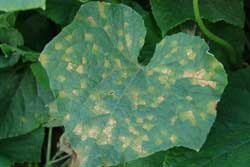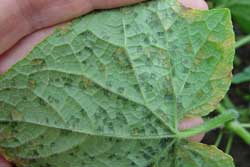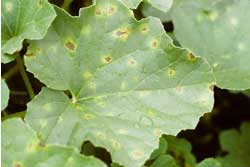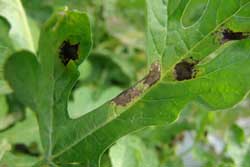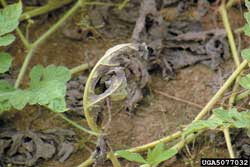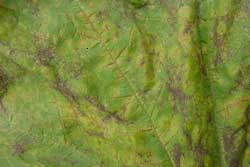Downy Mildew of Cucurbits—Pseudoperonospora cubensis
Downy mildew is caused by a fungus-like water mold which infects cucumbers, pumpkins, winter squash, and melons. It primarily infects the leaves, resulting in decreased photosynthesis leading to reduced yield and poor fruit quality; infections can be severe enough to kill the plant. The pathogen does not overwinter in the northeast, but is reintroduced each season, usually this occurs late enough to limit its effect.
Click on images to view full-size
Identification and Control Information
- Managing Downy Mildew in Organic and Conventional Vine Crops (PDF)—The Ohio State University Extension
- Downy Mildew of Pumpkin (PDF)—Purdue University Extension
- Fact Sheet with Symptoms and Control Options (PDF)—University of Illinois Extension
More Information
- Disease Prevention in Home Vegetable Gardens (PDF)—University of Missouri Extension
- Controlling Diseases in the Home Vegetable Garden (PDF)—University of Illinois Extension
- An Online Guide to Plant Disease Control—Oregon State University Extension
[Photos, left to right: Gerald Holmes, Valent USA Corporation, Bugwood.org; Gerald Holmes, Valent USA Corporation, Bugwood.org; Gerald Holmes, Valent USA Corporation, Bugwood.org; Gerald Holmes, Valent USA Corporation, Bugwood.org; David B. Langston, University of Georgia, Bugwood.org; Paul Bachi, University of Kentucky Research & Education Center, Bugwood.org]
